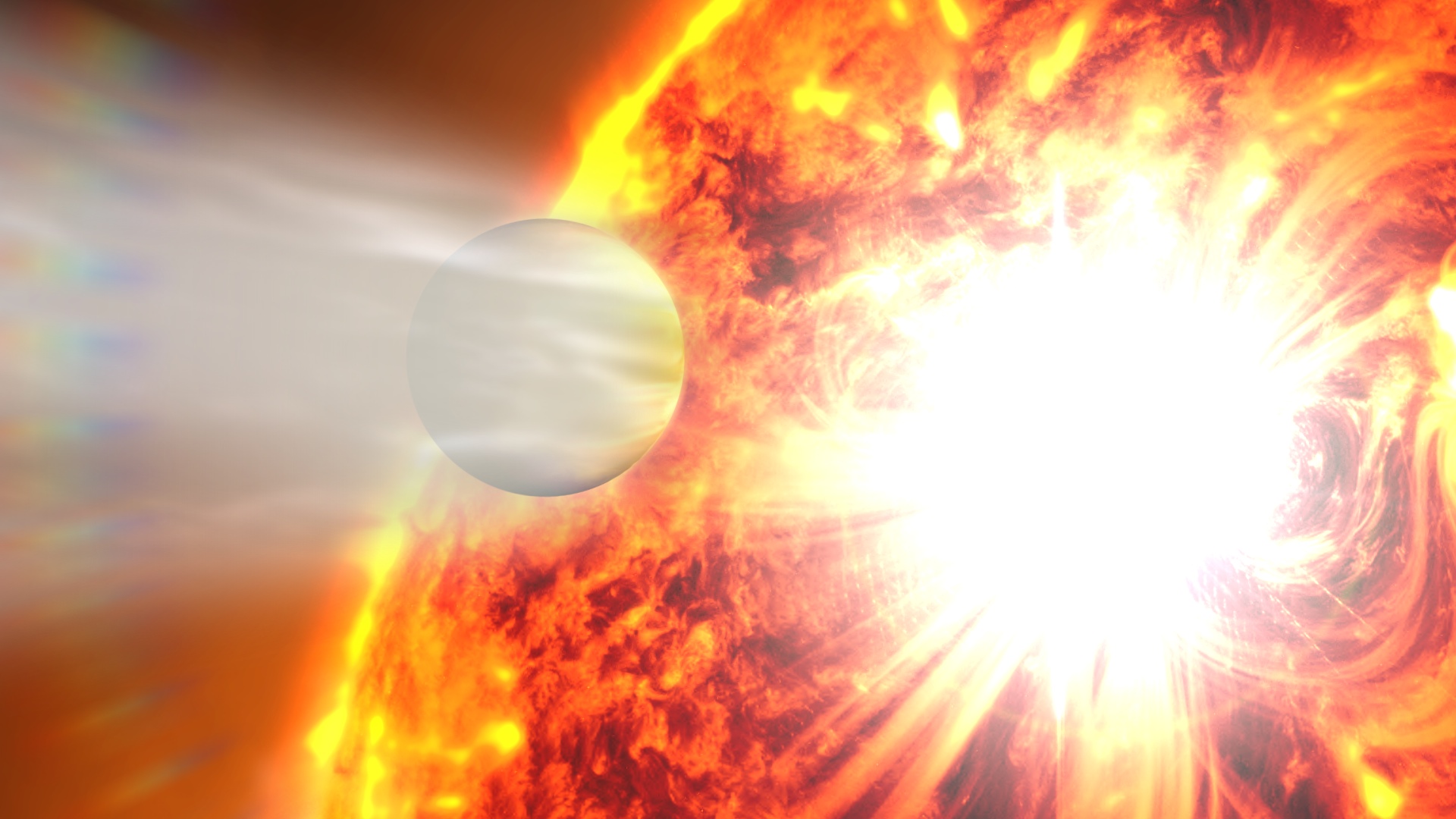Eroding Exoplanet
Planet HD 189733b orbits a star about 63 light-years away. The world is a gas giant similar to Jupiter, but about 14 percent larger and more massive. In 2010, researchers using NASA’s Hubble Space Telescope watched HD 189733b as it moved in front of its host star. Sixteen months later they looked again, but this time something was different—at least 1,000 tons of gas were leaving the planet's atmosphere every second. The question was: Why? Just hours earlier, NASA’s Swift satellite saw the planet's star unleash a powerful eruption known as a stellar flare. Because the planet is so big and orbits its star in close proximity, the blast had an outsized effect, sending streams of atoms racing away from its atmosphere at speeds greater than 300,000 mph. Watch the video to learn more.

A planet’s atmosphere is blasted away by a stellar flare.
Learn more about HD 189733b’s escaping atmosphere in this video.

HD 189733b circles its star at a distance of only 3 million miles, or about 30 times closer than Earth's distance from the sun.

In September 2011, a stellar flare erupted from HD 189733b’s star and blew away some of the planet’s gas.

The flare event was detected by NASA’s Swift satellite.
For More Information
See NASA.gov
Credits
Please give credit for this item to:
NASA's Goddard Space Flight Center
-
Animators
- Michael Lentz (USRA)
- Scott Wiessinger (USRA)
-
Video editor
- Scott Wiessinger (USRA)
-
Narrator
- Erin McKinley (OSU)
-
Producer
- Scott Wiessinger (USRA)
-
Writer
- Francis Reddy (Syneren Technologies)
Release date
This page was originally published on Thursday, November 27, 2014.
This page was last updated on Wednesday, May 3, 2023 at 1:50 PM EDT.
